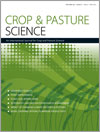Atmospheric nitrogen (N) deposition is an important issue of global climate change and it will significantly affect plant growth and reproduction, resulting in damage to ecological systems. However, little attention has been given to the effects of this factor on plant reproductive strategies. We investigated how variation in atmospheric N deposition affects the reproductive strategy of Chloris virgata (feathertop Rhodes grass). We simulated atmospheric N deposition to evaluate the trade-off between seed size and seed number, as well as its effects on offspring vigour. We found significant negative correlations between seed size and seed number per spike in the control and 20.0 g N m–2 treatments, as well as between seed size and seed number per plant in the control treatment. Seed number and seed weight per spike behaved similarly and were significantly lower in the control and 20.0 g N m–2 treatments than in the other N supply treatments. Spike number and seed yield behaved similarly, and the greatest gains in these values occurred from 2.5 to 20.0 g N m–2. Seed size reached its maximum values at low and high N levels, whereas seed N concentrations increased with N level. Although the germination percentage remained stable under different N levels, the highest germination rate occurred in the control treatment. Our findings showed that simulated atmospheric N deposition affected the reproductive pattern and seed vigour of C. virgata.
How to translate text using browser tools
29 April 2015
Reproduction strategy of Chloris virgata under simulated atmospheric nitrogen deposition
Wang Changfu,
Wang Ying
ACCESS THE FULL ARTICLE
<
Previous Article
|

Crop and Pasture Science
Vol. 66 • No. 5
April 2015
Vol. 66 • No. 5
April 2015
germination
reproduction
seed size
trade-off




